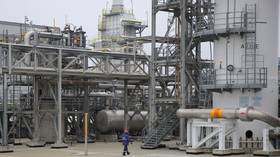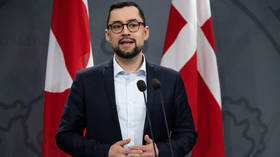Energy News Beat
[[{“value”:”
Bulgaria’s parliament approved on Thursday a cabinet led by Rossen Zhelyazkov, a former parliament speaker, ending months of negotiations on forming a coalition government.
The centre-right GERB party came first following a snap election in October, the seventh held in Bulgaria in four years, but has had to hold tough talks with other political parties to form a government.
One hundred twenty-five lawmakers in the 240-seat legislature approved Zhelyazkov’s proposed cabinet on Thursday, opening the way for a new government to take office.
GERB’s coalition partners are the pro-Russian Bulgarian Socialist Party (S&D) and the populist There is Such a People, led by former TV presenter Slavi Trifonov. With the three forces falling short of the 121 MPs needed for a majority, Ahmed Dogan’s party, which represents the ethnic Turkish minority, said it would support the coalition without being part of it.
A coalition between a centre-right, centre-left, and populist force appears unlikely. However, commentators say that the parties behind Zhelyazkov’s cabinet share important similarities: conservative thinking and a national populist bias.
In this coalition bloc, the difference lies in the pro-Kremlin sympathies, which are strongly expressed in the socialist party and less so in the others.
“Bulgaria needs a regular government that will implement policies supporting the democratic rule of law, the competitiveness of the economy, security, and protecting citizens’ social rights,” Zhelyazkov told the parliament ahead of the vote.
Zhelyazkov pledged that his government would help the country enter the eurozone. The country is indeed very close to meeting the criteria for accession, but public opinion remains divided, fearing a price rise.
All the remaining parties will be in opposition.
The leader of the far-right and ultranationalist “Vazrazhdane” party, Kostadin Kostadinov, said that the new government begins with two “betrayals” and will end with two funerals—of the socialist party and “There is such a people.” According to him, the voters of these two formations have been deceived, and they will look for an alternative in the next elections.
Nikolay Denkov, former prime minister from the reformist ‘We Continue the Change’, said his force will be a “constructive and critical opposition”. “We will have experts for each minister to monitor their actions”, said Kiril Petkov, co-president of ‘We Continue the Change – Democratic Bulgaria’.
Radostin Vassilev from the small populist party ‘MECH’ (sword) declared the cabinet a “government of absolute unprincipledness.”
Delyan Peevski, leader of the Movement for Rights and Freedoms – New Beginning party, which fights for the ethnic minorities’ electorate, said, “Something very unclean was finally born”. He ironically congratulated Boyko Borissov, the leader of GERB, for bringing together “those who have denied him for years”.
(Georgi Gotev | Euractiv.com)
“}]]
The post Bulgaria’s parliament approves new government after months of coalition talks appeared first on Energy News Beat.




















